The Power of Tucking Cards in Wingspan
In this article, I’m going to cover the topic of tucking strategies in Wingspan. Generally speaking, tucking strategies are going to be the most efficient in the Wetlands, which fuels the engine with cards. In the same manner in which eggs fuel Raven-Gull/Deer, cards fuel tucking engines (although Franklin’s Gull and Killdeer can fuel Grasslands based tucking engines of their own). There is a wide variety of birds that can tuck cards in a variety of different ways. I’m going to highlight and discuss the birds that I feel are the most obviously powerful/useful.
There is a various assortment of tucking effects in Wingspan:
• Tuck/Lay: Tuck a card then lay an egg.
• Tuck/Draw: Tuck a card then draw a card.
• Tuck to Play: Instead of paying a card’s food cost, tuck a card for any/all food in the card’s cost.
• Play On Top: Instead of paying any costs, you can lay this bird on top of another. That bird becomes tucked.
• Discard Food/Tuck: Discard food to tuck cards.
• Mass Tucking: Tuck cards across multiple birds in a habitat.
• Other: Tuck cards under conditions not met above.
Tuck/Lay Cards
These are birds that lay an egg after tucking a card. They net two or more victory points per activation of their power. Stand-out examples include Bushtit, Red-Winged Black Bird, Noisy Miner, and White-Throated Swift. Tuck/Lay birds are great at producing eggs outside of the Grasslands.
They realize their full power in the Wetlands where they are supplied with a steady stream of cards to fuel their power. They allow you to continue playing birds without stopping to take the Lay Eggs action, as long as you have the food available. They are also notable for supplying eggs for bonus conversions in the Wetlands for even more cards.
Bushtit is a standout card for its multi-habitat capability, star nest, and large egg capacity of five. All for a moderate food cost. It can go a long way in helping to secure multiple end-of-round goals simultaneously. If I see this at the beginning of the game, I’m going to think hard about keeping it.
Red-Winged Black Bird is a standout due to its cheap cost (1 Wheat) and its dual habitat capability. If I see this at the beginning of the game, I’m going to think hard about keeping it.
Although it is restricted to the Grasslands, White-Throated Swift is a standout due to its cheap cost (1 Worm) and its ability to lay an egg on any bird, which gives you more control over end-of-round bonuses.
While expensive and unable to be played in the Wetlands, the Noisy Miner is a standout due to its flexible food cost (1 Worm/1 Nectar/ 1 Any), huge egg capacity of six, and its ability to score three victory points per activation by laying two eggs after tucking a card. This is balanced by the fact that activating this power also allows your opponents to lay one egg each.
The Noisy Miner is the perfect companion to the Raven-Gull/Deer engine but you’re going to have to work hard to accommodate a flood of eggs. If you do get them all together, the Miner can tuck a card produced by Gull/Deer and then supply the two eggs needed by the rest of the engine. Gull/Deer takes one egg (one victory point) and turns it into two cards. The Miner takes one card and turns it into three victory points (one tuck and two eggs). If you’ve managed to get Raven-Gull/Deer, Noisy Miner may be an “auto pick”.
Tuck/Draw Cards
These are birds that draw a card after tucking a card. They provide the fuel for their own power and can sustain themselves in the Grasslands and Forest. This is something that they have over the Tuck/Lay birds that need an external source of card drawing to keep them going. As an added bonus, you get to dig deeper into the deck in order to find high-impact cards. Stand-out examples include Barn Swallow, House Finch, Purple Martin, Audouin’s Gull, and Ruff. This archetype pairs notoriously well with Franklin’s Gull and Killdeer in the Grasslands.
These birds that can be played into the Forest have a harder time finding extra cards to keep them running, but if you have that one extra card in hand, they can act like a pseudo Wood Duck, allowing you to gain food while also cycling out bad cards and cycling in new cards. This is an effect worthy of note.
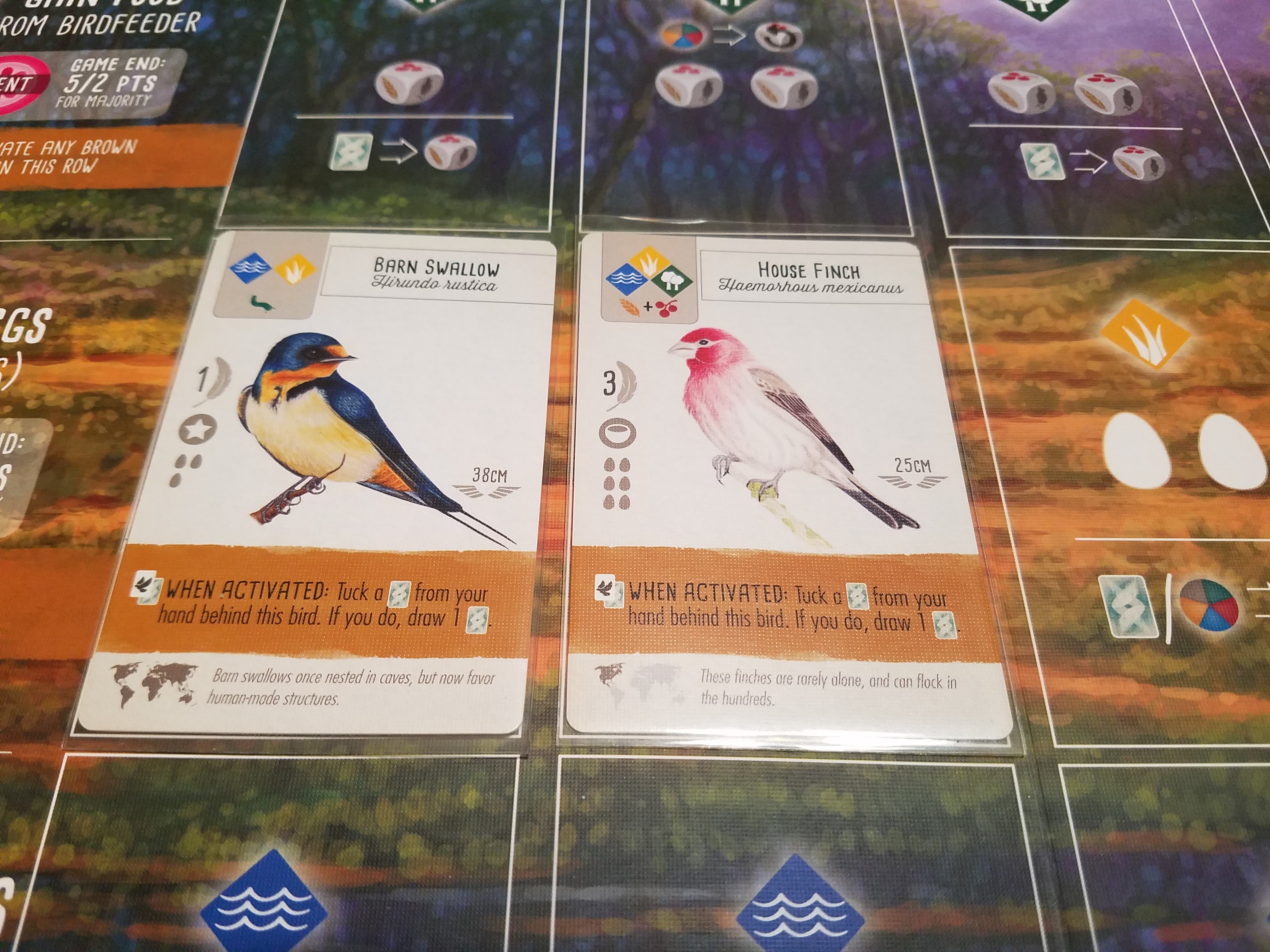
Barn Swallow is a standout card for its cheap cost (1 Worm), star nest with 3 egg capacity, and its dual habitats (Grasslands/Wetlands).
House Finch is a standout card for its huge egg capacity of six and the ability to live in any habitat for a moderate food cost.
Purple Martin is a standout card for its cheap cost (1 worm) and its dual habitats (Grasslands/Wetlands).
Audouin’s Gull is a standout card for its moderate yet flexible food cost (1 Fish + 1 Any) and its ability to draw two cards before tucking one. This allows you to dig even deeper into the deck. It is important to note that this bird will work perfectly even if you have zero cards in hand. The other Tuck/Draw birds require you to tuck a card before drawing a card.
Ruff is a standout card for its moderate yet flexible food cost (1 Worm + 1 Any), its teal power, and its dual habitats (Grasslands/Wetlands). This is a tucking bird that makes a great Grasslands supplement to your wetlands tucking engine. It can also be that perfect first or second bird in your Wetlands to help you get to the desirable third column, which allows you to draw two cards.
Its teal power activates on its own at the end of each round so you can set it and forget it and it stays out of the way of your Wetlands engine. If you’re leaning heavily on your Wetlands, you’ll have plenty of cards for the Ruff (unless you’re stockpiling Tuck/Lay birds or have a Mass Tucking bird who eats cards and doesn’t give any back).
Tuck-To-Play Cards
These birds are some of the most efficient points in the game and I’m not sure if they got the credit they deserved in the community with the original release of the European Expansion. Although, there is/was a lot of buzz around these birds in the lead up to the digital release of the European Expansion. Standouts include Bonelli’s Eagle and Eastern Imperial Eagle for their high point values.
The big point plays of the white-powered Bonelli’s Eagle and Eastern Imperial Eagle represent some of the biggest points scored by a single activation. When fueled by card drawing effects, these birds let you bypass the Gain Food Action in a very effective way.
Three excess cards (easy to come by in the Wetlands) can turn Bonelli’s Eagle into a nine, ten, or eleven-point activation depending on what column you play it in, and a Wetlands engine doesn’t even need a food fixing bird to play them. This is a very powerful method of tucking cards in Wingspan.
Each of the other birds in this category follows the same formula and they only get better when you have the Falconer/Rodentologist bonus cards, which essentially adds two points to every bird with a predator power/eats rodents. Generally speaking, these birds should become a priority if you happen to have one of these bonus cards. Even more so if you manage to pick up both.
If you end up having several birds that qualify, regardless of which birds they actually are, it’s probably worth it to start picking up the Oceania birds that let you look at multiple bonus cards such as Kea or Kakapo in order to score that big pay off in bonus points.
As Wingspan Tournaments discord user “motherlove” has aptly stated about the best of these birds, “The entire room always gets hyped when Bonelli appears in [the] tray, the good thing about Bonelli is that it’s the only bird you ALWAYS want, at any point in the game and no matter what engine you have.”
Play On Top Cards
Common Buzzard, Eurasian Hobby, Montagu’s Harrier, and Red Kit are worth four victory points and can hold two eggs. They don’t make much of an impact on the game.
They are the most effective when you have the Falconer/Rodentologist bonus cards (which essentially makes them six point birds; eight with both) and viable targets that you don’t need anymore (such as zero/one point birds/white power birds). They can also be good drops off of the teal powered Yellowhammer archetype of bird, which allows you to play birds at the end of the round without an action cube investment.
Within this class of birds, the Common Buzzard and Eurasian Hobby are standouts for their cheap food costs and being able to live in any habitat. You lose all food and eggs on any bird you target which makes the Play On Top birds even more painful to utilize. I think I have only ever played one in all of my games, and that was an early Hobby in the first Wetlands slot under Falconer, paying its actual food cost to do so (making it a six-point activation for the cost of one food; a lot of points/efficiency for the early game).
Mass Tucking Cards
The Mass Tucking birds add fuel to the fire. Depending on the bird, standout examples allow you to consistently tuck one to five cards behind the various other birds in their habitat (the exception being Maned Duck). They are the cause for the most obscene tucking scores you can have.
Tucking engines seem to be one of the hot topics in the community right now (as of December 2020; again during the winter of 2021/2022 with the emergence of “Full Tuck” in the Tournament Discord) and I’ve observed that the pictures of the games being posted on Facebook showcase either Maned Duck or Common Chiffchaff, which is no surprise. These birds have great powers for tucking cards in Wingspan.
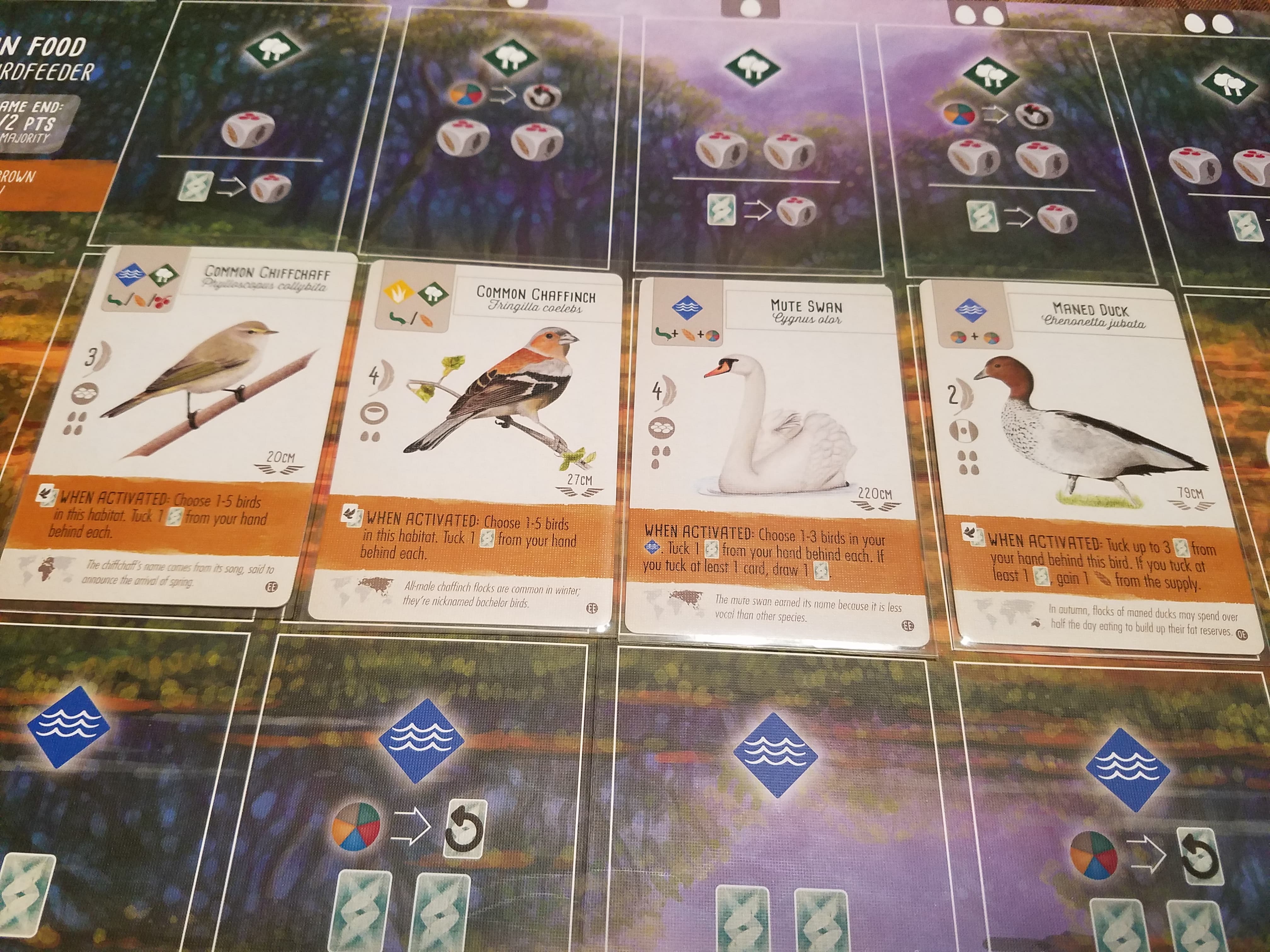
Common Chiffchaff is a standout for its cheap and flexible food cost (1 wheat, 1 worm, or 1 cherry) along with its ability to live in the Wetlands (unlike the Chaffinch which is restricted to Grasslands/Forest). “The Chaffs” are very card hungry when they team up with multiple birds which makes them much harder to use effectively at their most powerful state outside of the Wetlands.
Mute Swan is a standout for its flexible food cost and its ability to tuck up to three cards under three different birds, scoring three points for each activation. It’s a “Mini Chaff”.
Maned Duck is a standout for its moderate yet flexible food cost (two wild), its ability to tuck up to three cards without any other birds on the board, and its ability to produce one wheat when it tucks at least one card. Maned Duck becomes obscene when paired with Sandhill Crane, Whistling Duck, or Canada Goose in the Wetlands (and actually helps to get them on the board in the first place without using the Gain Food Action).
When paired with a Tuck/Lay bird, you’ve essentially created a new version of Raven-Gull/Deer. You are drawing cards, laying eggs, producing food, and scoring points with one activation. You are scoring more raw victory points per activation than Raven-Gull/Deer during the same point of the game (three to one).
The potential of this card should not be ignored, and it should probably be an auto pick any time you see it in the early game. I believe it is among the most powerful card printed since the core Ravens, Franklin’s Gull and Killdeer. I’m surprised more people don’t talk about it.
I originally rated Maned Duck as God Tier on our tier list but have since moved it to Tier 0 (which didn’t exist at the time of the release of Oceania). My reasoning for this is that as I played more games with the Oceania board, I realized that food production like this didn’t matter quite as much as it does on the core mat, due to the general increase of available food through the revised forest and birds that share food.
As an aside, now that I think about it, the community’s biggest gameplay discussions seem to revolve around food and how we acquire it. Ravens and Nectar have historically dominated these discussions. I wonder if Maned Duck will ever enter into those debates.
Anyway, while a Maned Duck engine won’t produce food as effectively as a Raven, it might not matter because there are a lot of birds that eat wheat and you’ll be drawing enough cards to realistically see some of them. You could also get out of a tight food spot by paying two wheat for one other food type.
Tuck To Play birds don’t care about food and you’ll be drawing enough cards to play them if you see them. Birds such as Crested Pigeon, Australian Raven, Common Starling, Eurasian Collard Dove, and House Sparrow all have either Teal powers or Yellow powers that can utilize excess wheat in your supply if all else fails.
Cards that Discard Food to Tuck
There are several birds in this category that are cut from the same cloth. For example, Canada Goose lets you discard one wheat to tuck two cards from the deck behind it. Four other birds share this power although two use fish instead of wheat. They are fairly easy to get onto the board but require consistent support to utilize effectively. Nothing about them stands out other than the fact that they can score a lot of points if supported properly with cards like Spotted Towhee, Maned Duck, Osprey, Crows, or Ravens.
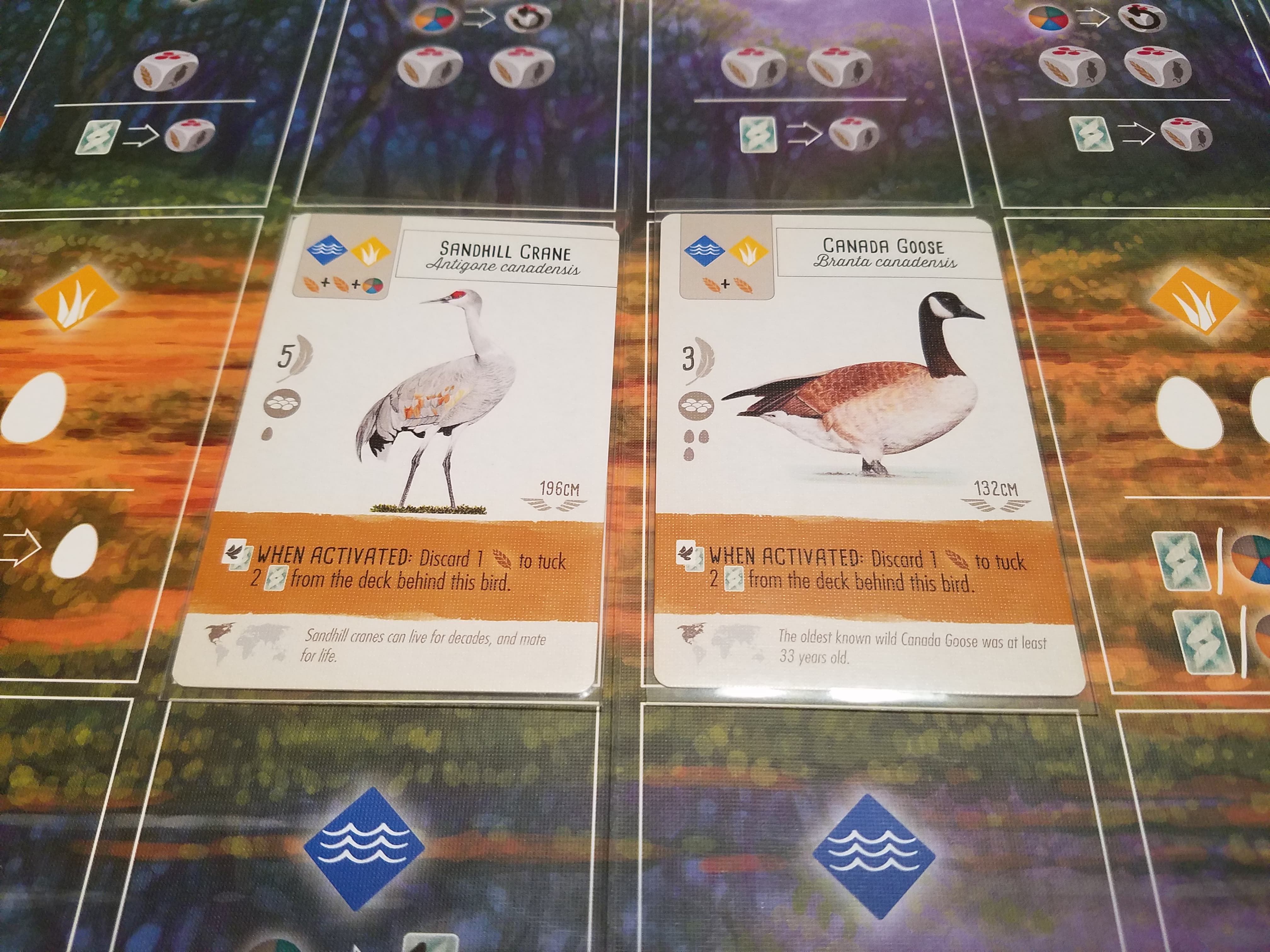
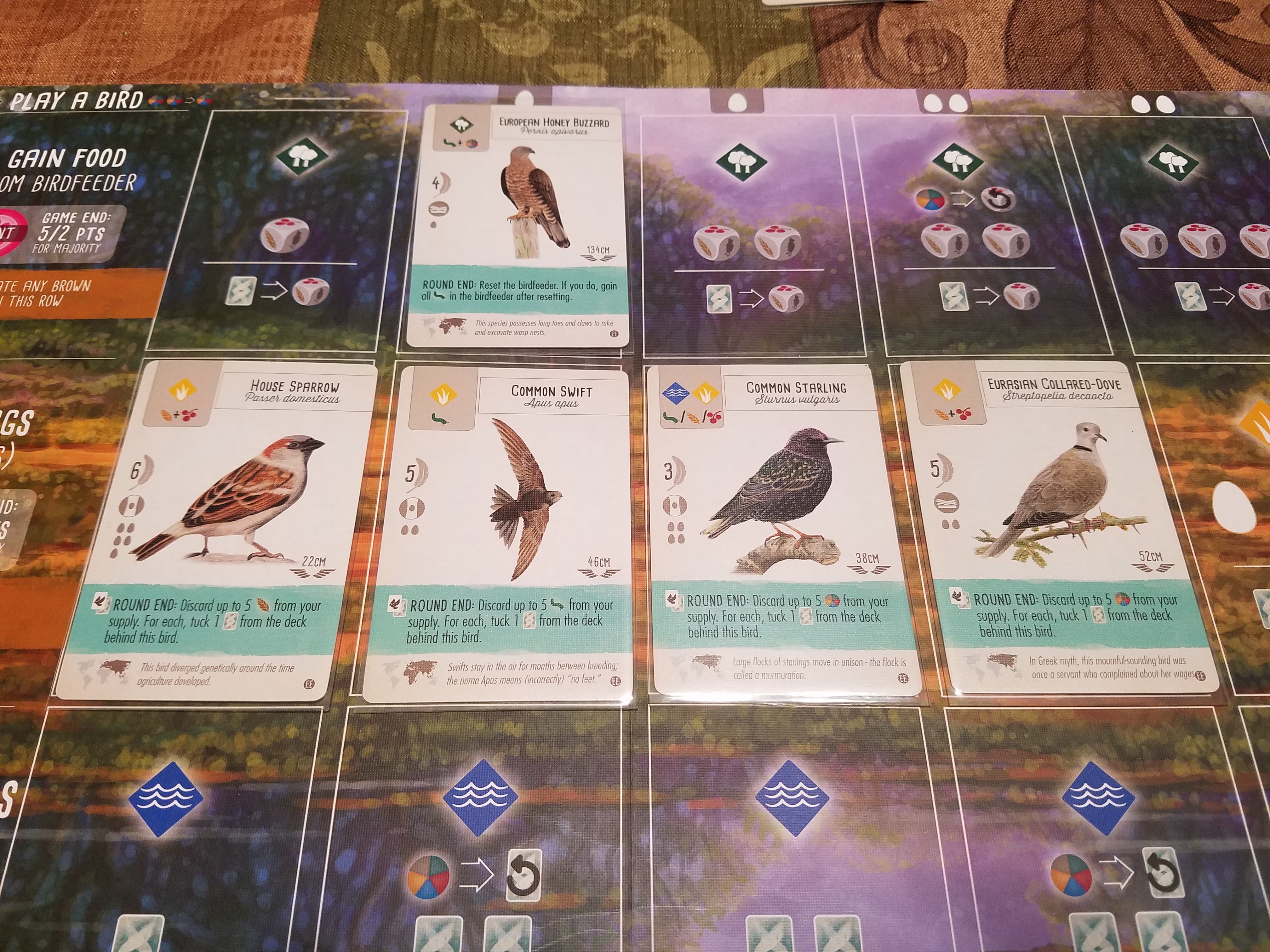
Common Swift, Common Starling, Eurasian Collard Dove, and House Sparrow are birds with Teal powers that allow you to discard food at the end of the round in order to tuck cards from the deck. They are excellent sources of semi-passive victory points in the absence of more effective uses of food, as you can set them and forget them outside of your Wetlands engine.
Some of them combo exceedingly well with European Honey Buzzard (another set and forget bird) that lets you reroll the birdfeeder at the end of the round and take all worms that comes up.
Wrapping Up Card Tucking in Wingspan
Tucking Engines are one of the most effective ways of scoring a lot of points within the twenty-six activations allowed to us each game. The strategy has kind of hit a critical mass with the introduction of Maned Duck into the metagame (which can produce obscene scores on its own).
Tucking engines based in the Wetlands can overwhelm a card-drawing engine centered on Killdeer or Franklin’s Gull in the Grasslands. With mass tucking, Wetlands engines have the ability to quickly outscore a Raven based food engine in the Grasslands that has to lay eggs, get food, then play a bird in order to score points. Raven engines also need to find a way to generate cards or they are dead in the water. Tucking engines are generally swimming in cards and options.
Egg engines have a cap (the egg capacity of played birds) whereas there is no limit to the number of tucked cards any one bird can hold. A Tuck/Lay bird teamed up with a “Food Fixer,” a Mass Tucker, and a passive scorer can squeak out the food and eggs needed to set up a massive end score. The kind of score that can knock Raven’s off of their throne and make people ask, “how is this even possible?”
Want to learn more tucking cards in Wingspan? Check out our next article in this series and discover some nonstandard ways of tucking cards in Wingspan.
What’s your favorite or most successful tucking engine combo? Let us know in the comments!
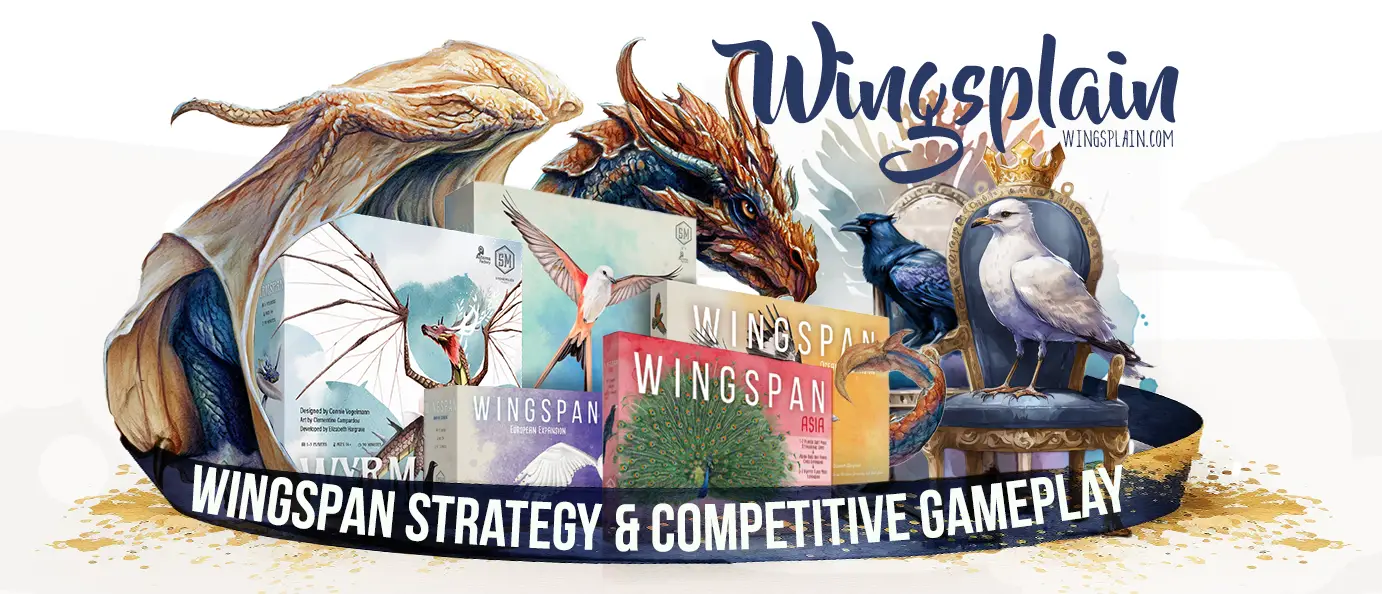
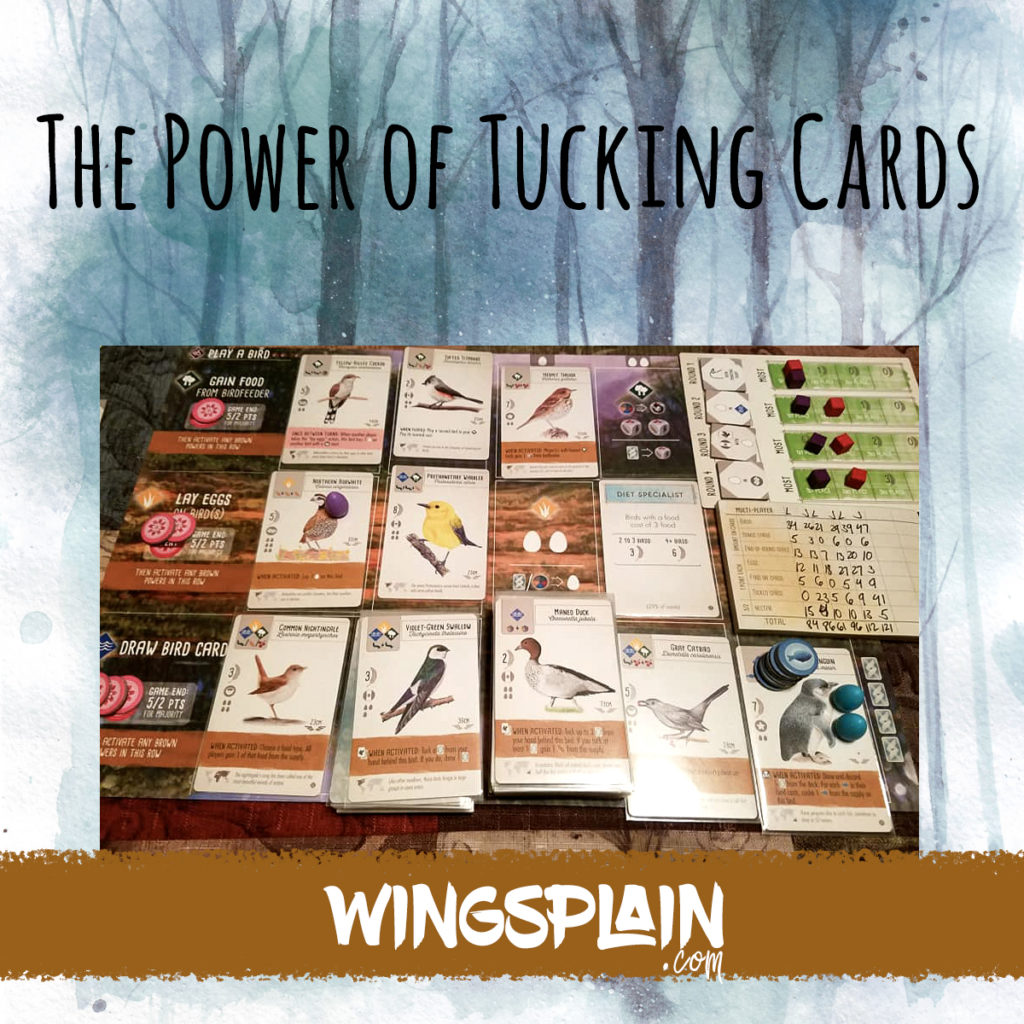
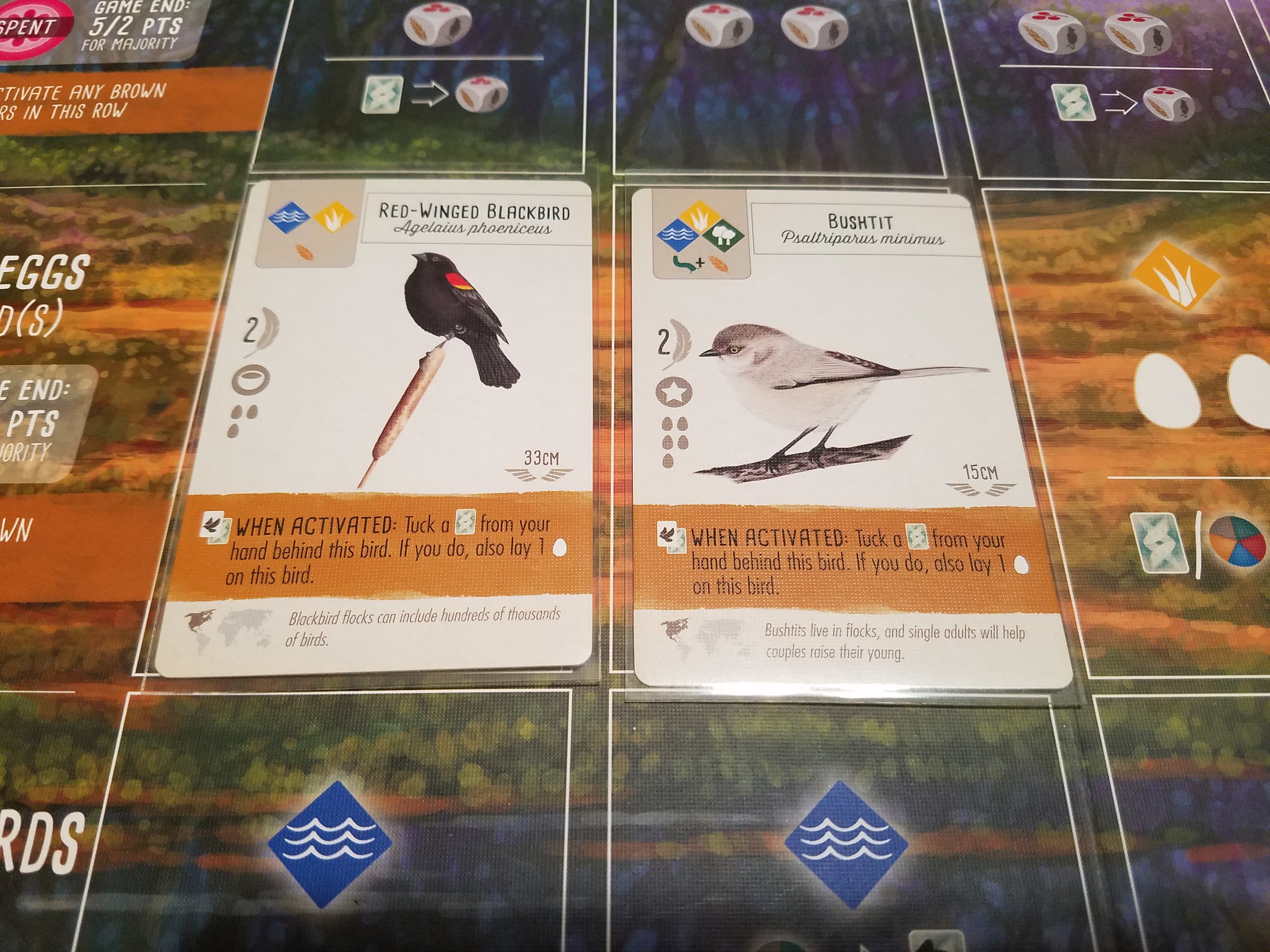
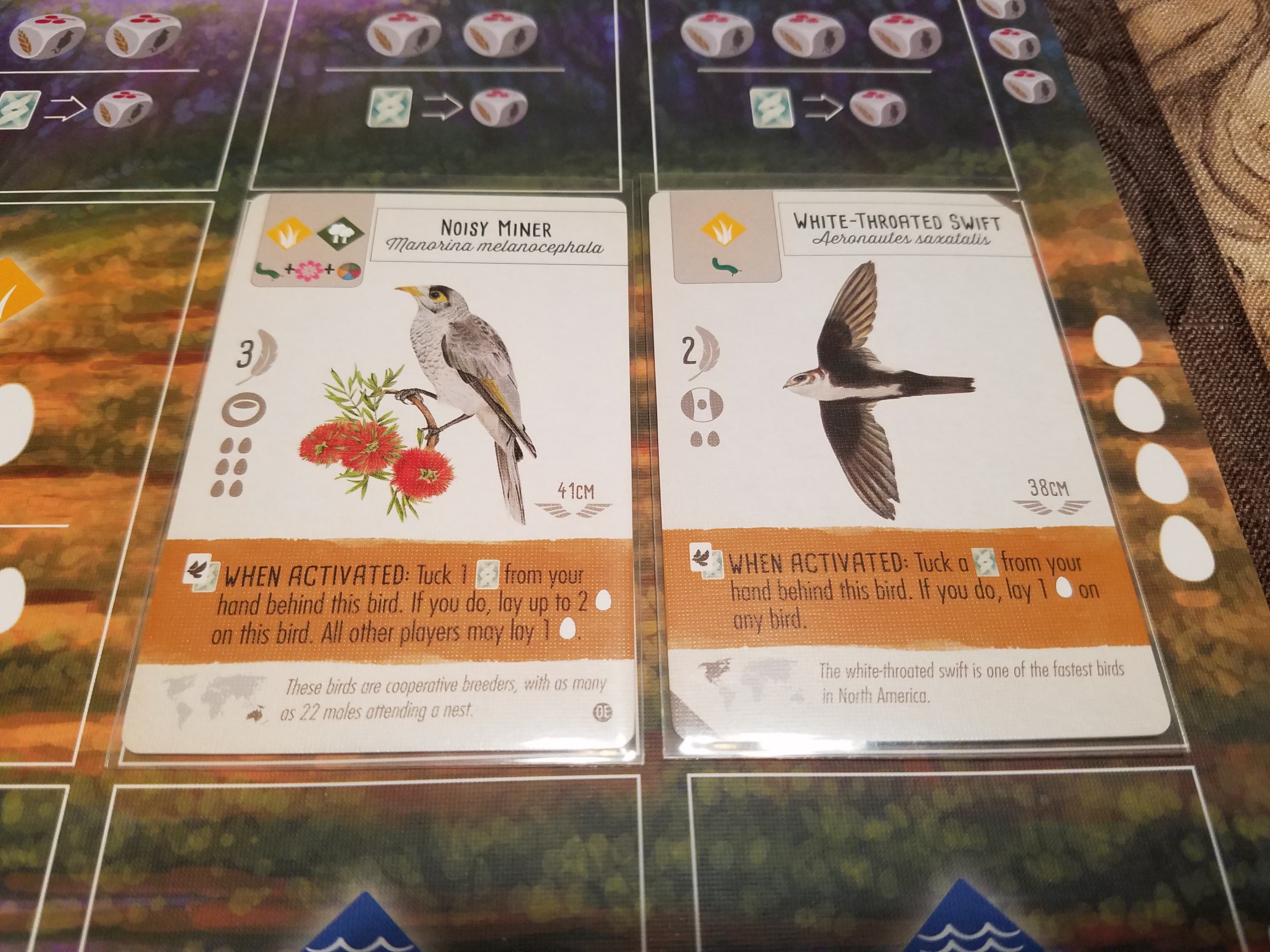
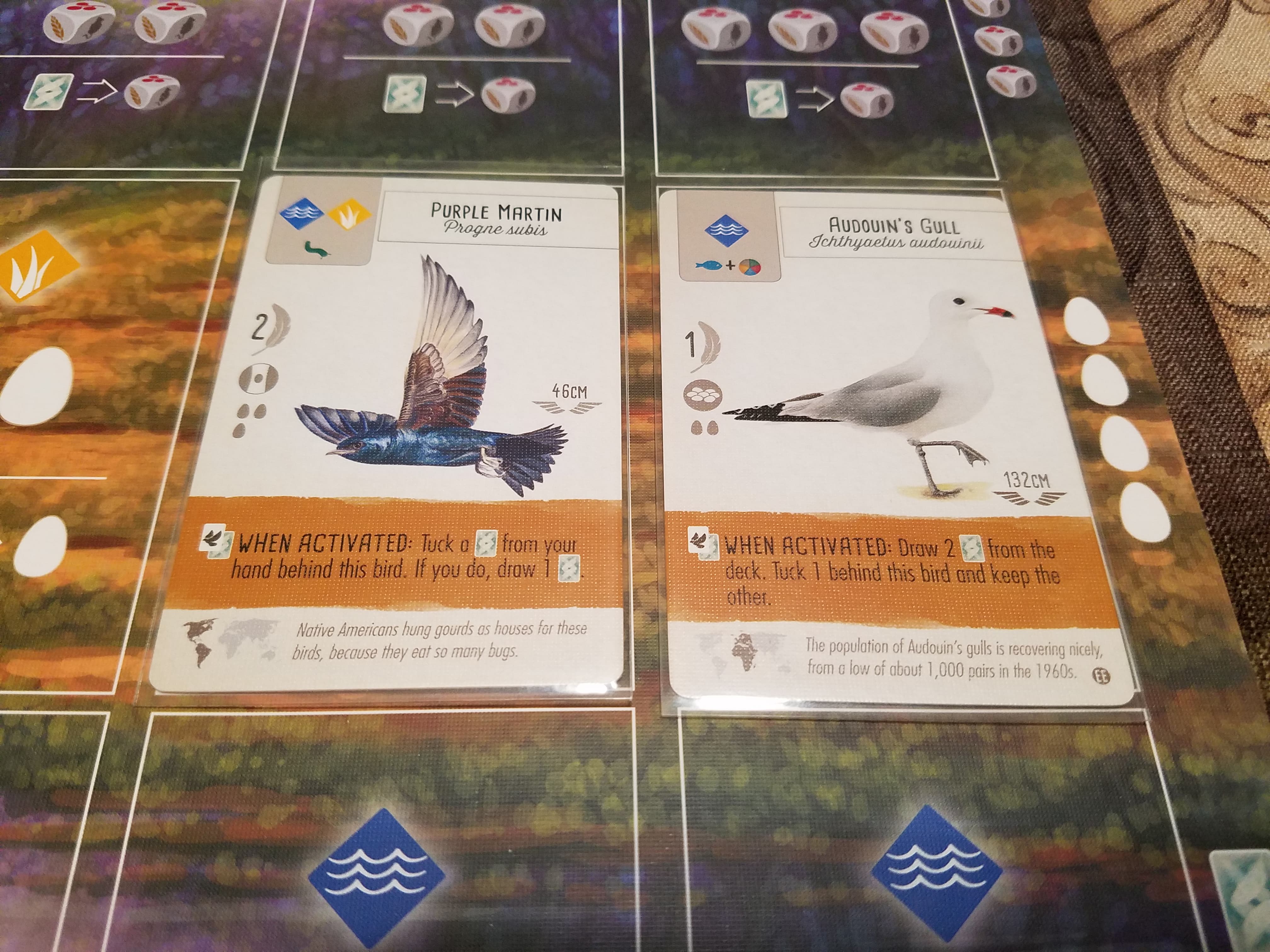
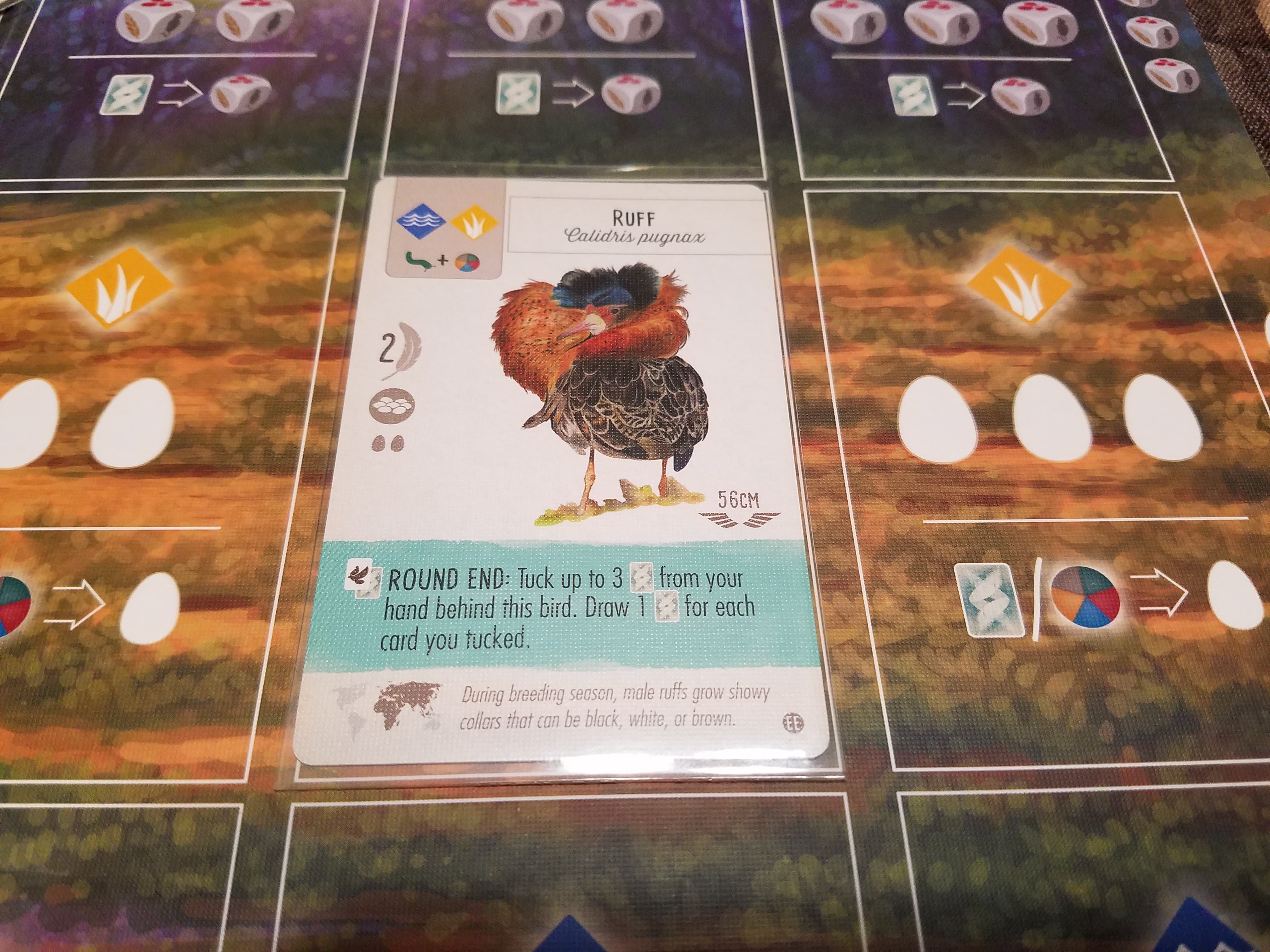
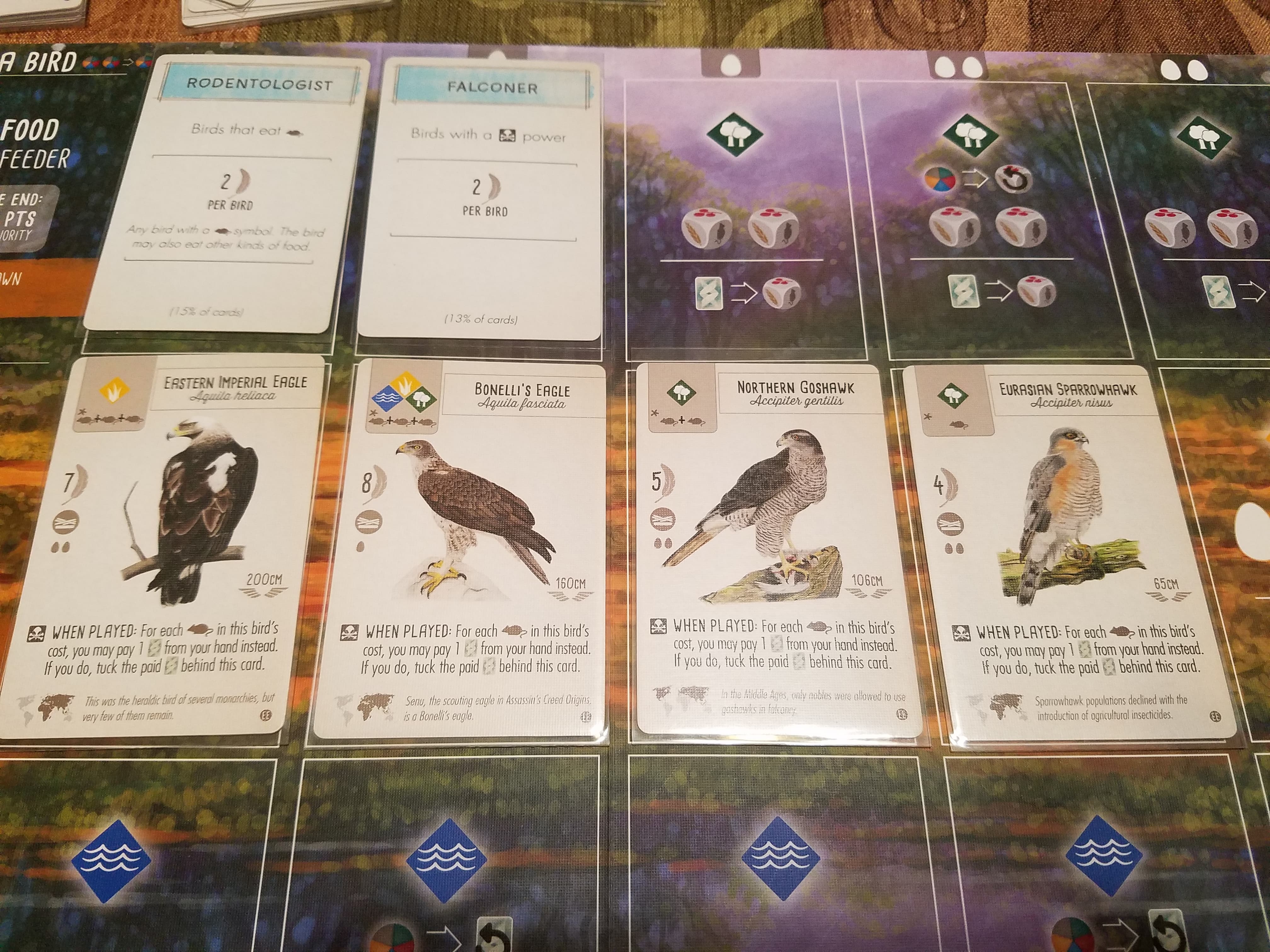
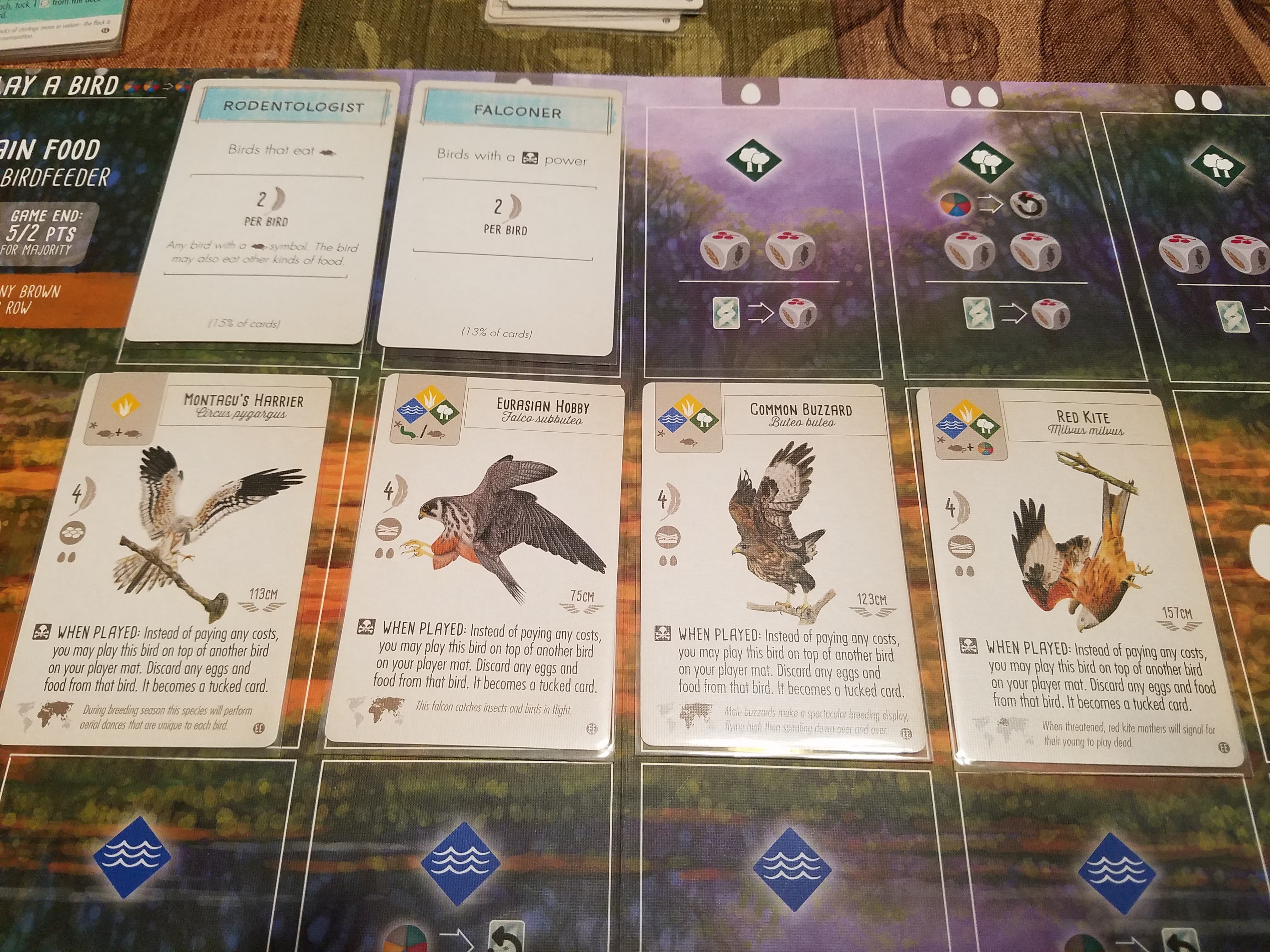

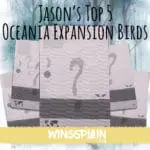
I thought they were “berries”, “invertebrates”, and “seeds”. Though my Dad always calls berries cherries, and even I usually say wheat, and of course, no one says invertebrates, haha.
But I love tucking, haha. If I’m not using tucking birds, I don’t feel right. Though I play on Steam, so we don’t quite have a lot of the good ones, but I had a nice grasslands one time with Canada Goose, Spotted Towhee, Killdeer, Mockingbird, and Dark-eyed Junco. Still only tucking 5 cards per turn though.
Another time I tried really hard to get both the Mockingbird and Catbird in my grasslands with a Raven and Canada Goose, but couldn’t do it. But I bet Canada Goose, Mockingbird, Catbird, Raven, Raven/Crow would just be so satisfying, haha.